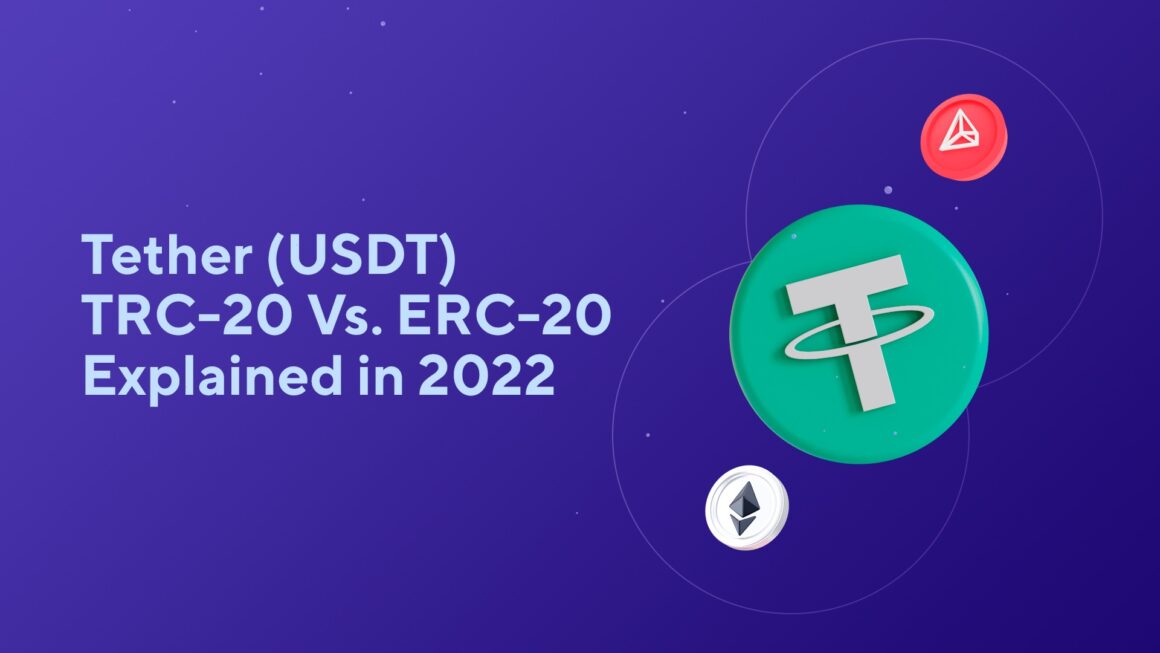You’ve definitely come across the terms USDT-TRC20 or ERC20 — the most popular Tether stablecoin formats. The stablecoin Tether (USDT) is one of the most popular stablecoins on the market among users. USDT was originally created based on the Bitcoin blockchain using the OMNI Layer protocol. Later, the stablecoin was implemented in other blockchains as well — there are analogs in various networks.
In this article, we’ll explain everything you need to know about the difference between TRC-20 and ERC-20. Let’s get started!
What Is Tether (USDT)?
Tether is a stablecoin pegged to fiat currencies 1:1. For example, against the dollar — USDT, the euro — EURT, and the Chinese yuan — CNHT. Tether Limited issues the coins, and the company claims that its coins are 100% backed by Tether reserves. Due to this, Tether is less volatile compared to other tokens.
USDT analogs exist in the following blockchains:
-
- OMNI — issued on the Bitcoin blockchain;
-
- ERC20 — issued on the Ethereum blockchain;
-
- TRC20 — issued on the Tron blockchain;
-
- BEP2 — issued on the Binance blockchain;
-
- BEP20 — issued on Binance smart chain.
In addition, Tether has also released a gold-backed stablecoin, Tether Gold or XAUT. In this case, the stablecoin is pegged to gold.
USDT ERC-20 Vs. TRC-20: Key Features to Know
In February 2018, ERC-20 USDT tokens on the Ethereum blockchain were issued to allow Tether to be used in smart contracts and decentralized applications of this network. This step reduced transaction time since transactions in the Bitcoin network are quite slow. However, the Ethereum blockchain is famous for the high cost of gas for commissions.
Therefore, in April 2019, the release of USDT tokens based on the TRC-20 standard began on the Tron blockchain network, which gave impetus to the development of the entire Tron ecosystem. The key difference is undoubtedly low commissions in this network.
Differences Between USDT ERC-20 & TRC-20
The Tether stablecoin is identical in all these networks. The differences are in issuance protocols, transaction time, and fees charged by these networks. The cheapest fees can be found on the Tron blockchain network. When transferring funds, make sure to select the correct network and carefully indicate the destination address.
Otherwise, there is a high probability of losing funds — although it is still the same Tether stablecoin. Stablecoin accounts can be easily recognized by an address format. It is worth noting that the USDT address on the Tron network (TRC-20) starts with ‘Tx.’ In turn, the USDT address on the Ethereum (ERC-20) network begins with ‘0x.’
Tether (USDT) TRC-20 Is Now at Switchere
We’re pleased to announce that USDT (TRC-20) issued by Tether is now available to purchase for Switchere customers. Starting today, USDT can be easily and quickly exchanged for fiat or other digital assets at floating rates on our full-featured platform.
Switchere crypto swaps are characterized by fast speed and maximum efficiency — purchase all leading cryptocurrencies in the fastest and most convenient ways at the best exchange rates.
Conclusion
Since Tether (USDT) was created on such popular networks as Ethereum and Tron, this makes it one of the most widely used stablecoins on the market.

Leave a Reply